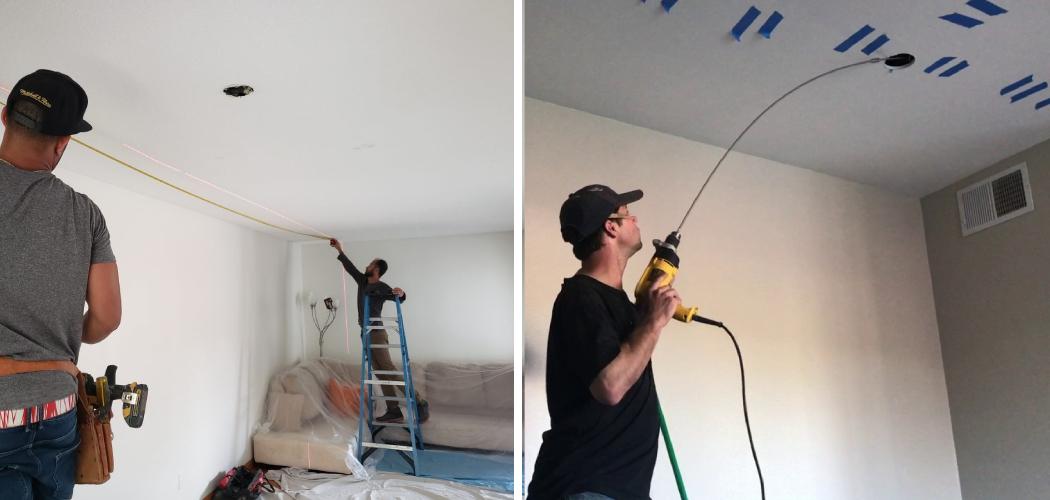Are you embarking on some home DIY projects and find yourself needing to tackle the task of drilling through joists in a finished ceiling? While this can be trickier than it sounds, it is by no means impossible. With the right tools and technique, you’ll be able to quickly and safely navigate your way through even complicated roof structures with ease.
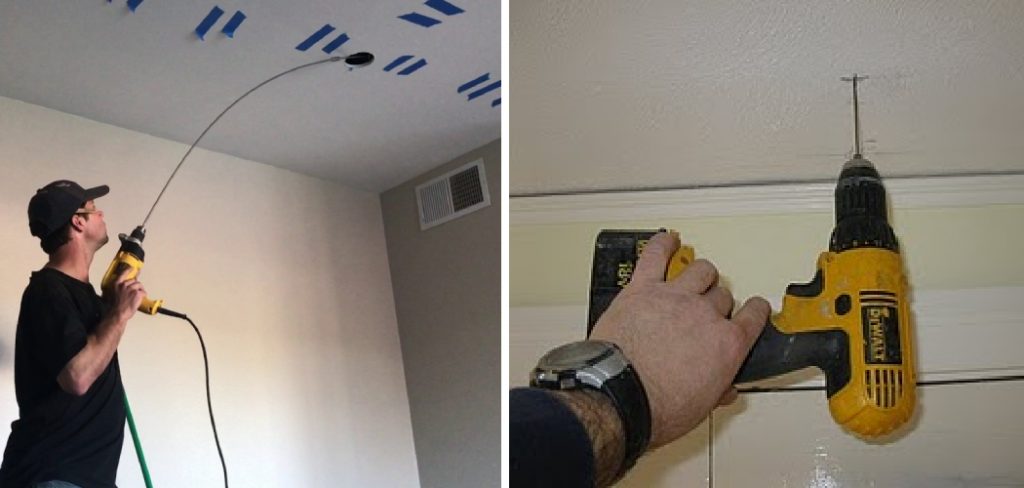
In this blog post, we’ll go over what kind of drill bits you should use for different materials when completing work on a finished ceiling, as well as useful advice about how to make sure your final result looks tidy. Keep reading as we break down how to drill through joists in a finished ceiling!
Drilling through joists in a finished ceiling can be an intimidating task to tackle, but it doesn’t have to be. With the proper guidance and tools, anyone can undertake this job correctly. In this article, we’ll break down how to drill through joists in a finished ceiling so you feel comfortable taking on your next project with precision and safety.
Why May You Want to Drill Through Joists in a Finished Ceiling?
1. To Install Lighting Fixtures
One of the most common reasons to need to drill through joists in a finished ceiling is to install lighting fixtures. Many of these fixtures require drilling into the joists above the finished ceiling for support.
2. To Add Secure Support for Other Fixtures
In addition to lighting fixtures, you may also want to add secure support for other fixtures like mirror frames or window treatments. Drilling through joists can help provide the extra support needed for these fixtures.
3. To Install A Ceiling Fan or Ventilation System
Finally, you may need to drill through joists in a finished ceiling to install a ceiling fan or ventilation system. This is often necessary because the fans and vents require additional support than what is provided by the existing joists.
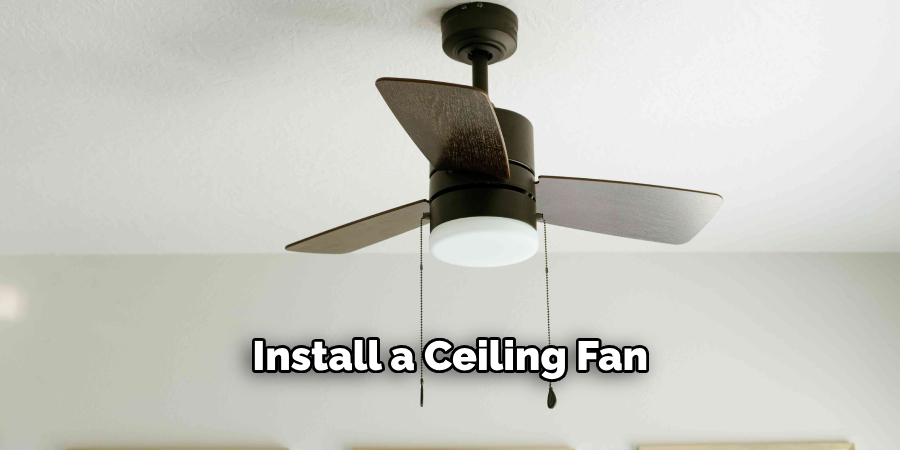
To ensure that your drilling project is successful, be sure to use the right tools and take all necessary safety precautions. When using power tools, always wear eye protection and follow all manufacturer instructions.
Additionally, make sure that you are working in a well-ventilated area to avoid breathing in any hazardous dust or fumes. Finally, if you are not sure about the best way to drill through joists in a finished ceiling, be sure to consult a professional for help.
How to Drill Through Joists in a Finished Ceiling in 5 Easy Steps
Step 1: Gather All The Tools You Need
The very first step is to make sure you have all the necessary tools and materials that are required for the job. These may include a drill, drill bits, protective eyewear, level, measuring tape, and some screws or bolts as well.
Step 2: Measure Your Ceiling Height
Measure the height of your ceiling before drilling through it. This will help you determine the exact location of the joists so that you can make sure that your drill is correctly positioned.
Step 3: Mark The Position Of The Joists
Mark the position of the joists on your ceiling with a pencil or marker. This will help you ensure accuracy when drilling into them. Also, you have to make sure that the joist is not damaged too much.
Step 4: Drill The Hole
Using your drill and a bit of the appropriate size, slowly and carefully drill through the joists in your ceiling. It is important to make sure that you keep the drill straight so that it does not wobble or wander off course.
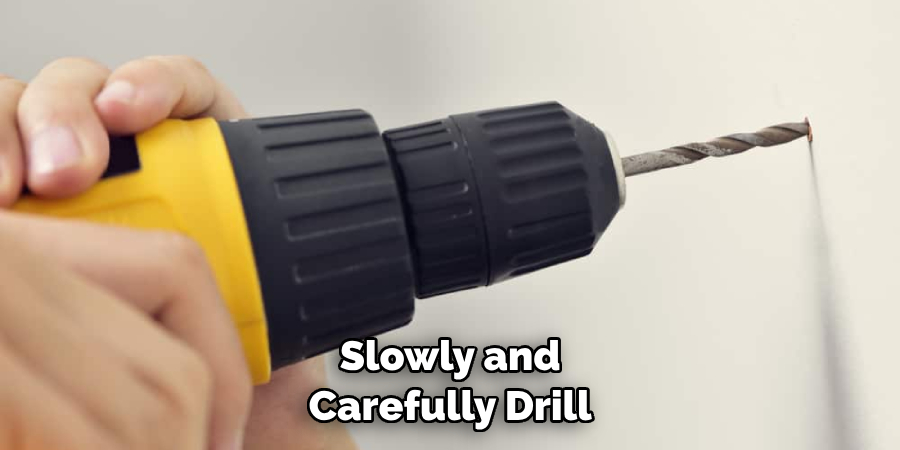
Step 5: Secure The Hole With Screws/Bolts
Once the hole has been drilled, use screws or bolts to secure it and ensure that it won’t move. This will help to ensure that your ceiling is safe and secure. Also you have to make sure that these screws or bolts are of the right size and don’t damage the joists.
These five easy steps will help you safely and easily drill through joists in a finished ceiling. With the correct tools, patience, and skill you can make sure that the job is done correctly. Just remember to always take proper safety measures when drilling into any surface.
Some Additional Tips to Drill Through Joists in a Finished Ceiling
1. Do Not Drill Through Electrical Wiring
The most important safety measure when drilling through joists in a finished ceiling is to make sure you don’t drill through any electrical wiring. Before you start drilling, make sure that there are no wires behind the wall or ceiling.
2. Use an Impact Driver and Masonry Bit
An impact driver is designed to provide more torque than a regular drill, making it easier to drill through joists. Use an impact driver and a masonry bit for the job.
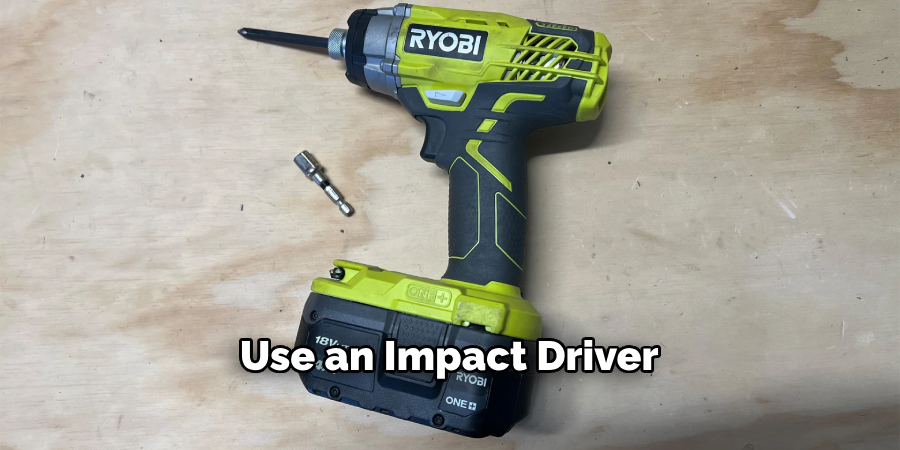
3. Mark the Joist Location
Using a stud finder or other tool, identify where the joists are located in the ceiling so you know exactly where you will be drilling. It is important to be precise when drilling so that you don’t damage any wiring or cause structural damage to the ceiling.
4. Pre-Drill Pilot Holes
To make sure your drill bit doesn’t slip or skip when drilling through joists, pre-drill a pilot hole on either side of the joist before drilling the larger hole. This will also help to ensure you don’t damage any wiring behind the wall or ceiling.
5. Wear Safety Gear
When drilling through joists, it is important to wear safety gear such as goggles and a dust mask to protect yourself from debris and other hazards associated with drilling. Also you have to make sure that the room is well ventilated as drilling can create a lot of dust.
Following these tips should help you drill through joists in a finished ceiling easily and safely. Always make sure to double-check that there are no wires or other hazards before beginning work, and be sure to wear all necessary safety gear. With the right preparation and precautions, you can easily and safely drill through joists in a finished ceiling. Good luck!
Frequently Asked Questions
What Precautions Should I Take When Drilling Through Joists in a Finished Ceiling?
When drilling through joists, it is important to take the necessary precautions to ensure safety and avoid damaging your ceiling or its structure. This includes wearing eye protection, using a dust mask or respirator to protect yourself from any hazardous particles created by drilling, and making sure the drill bit is sharp and properly sized for your project.
Additionally, if you are dealing with electrical components or wires in the ceiling, make sure to check that they are not active before beginning drilling.
What Is the Best Way to Determine Joist Locations?
The easiest way to determine joist locations is to use a stud finder. This device uses either a magnetic or electronic field to identify the location of wood beams behind drywall, plaster, or other materials. If you don’t have access to a stud finder, tapping along the ceiling with your knuckles can also help you locate joist locations.
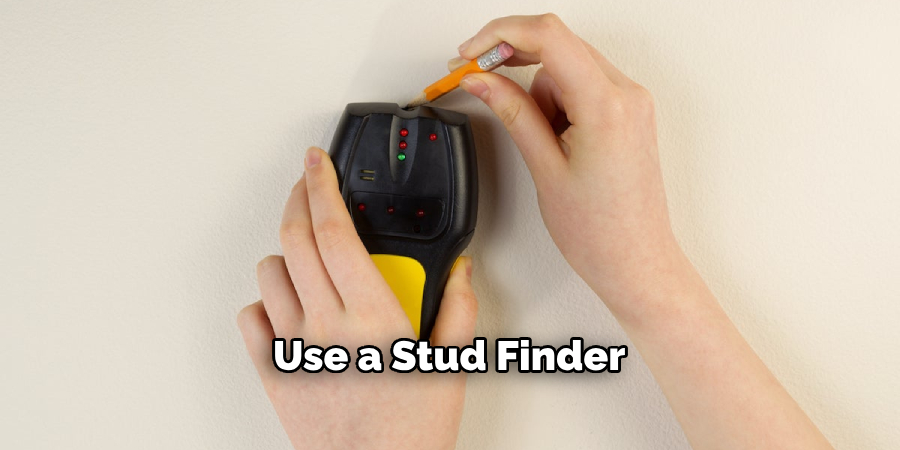
How Do I Drill Through Joists in a Finished Ceiling?
Once you have located the joists, line up the drill bit with the location and use a slow speed to ensure that you don’t damage the ceiling or its structure. Additionally, make sure to hold the drill firmly and keep your hands away from any rotating parts.
When drilling through multiple joists, take frequent pauses to check the drill bit and remove any debris. Finally, use a depth guide or stop collar to ensure that you don’t drill too far into the ceiling.
What Is The Best Drill Bit for Drilling Through Joists?
The best type of drill bit for drilling through joists in a finished ceiling will depend on what material is being drilled. For wood joists, a spade bit or paddle bit will be the most effective. Additionally, you can use an auger bit for drilling through metal or plastic joists. Finally, make sure that the drill bit is sharp and properly sized for your project to ensure optimal performance.
Is It Necessary To Wear Eye Protection When Drilling Through Joists?
Yes, it is absolutely necessary to wear eye protection when drilling through joists. Even if you are taking the necessary precautions to avoid any damages or injury, small particles and fragments can still be kicked up during drilling due to friction and vibration. Wearing safety glasses or goggles will help protect your eyes from any flying debris.
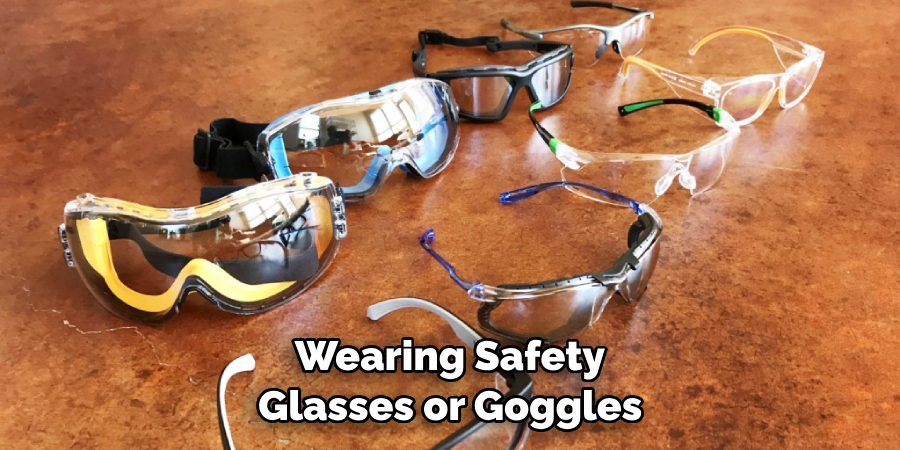
What Is the Best Way To Avoid Damaging Electrical Components?
It is important to make sure that all electrical components and wires are not active before drilling through joists in a finished ceiling. The best way to do this is to turn off the power at its source and use a non-contact voltage tester to verify that everything is completely deactivated. Additionally, make sure to keep your drill bit away from any electrical wires while drilling.
What Is A Depth Guide or Stop Collar?
A depth guide or stop collar is a device used to ensure that you don’t drill too far into the ceiling when drilling through joists. It attaches to the drill bit and stops it from drilling more than a certain depth based on your desired length. This will help to prevent any damages to the underlying structure or ceiling material.
What Is The Best Way To Remove Drill Debris?
When drilling through joists in a finished ceiling, it is important to frequently pause and check for any debris that may have been kicked up during drilling. The best way to remove this debris is to use a vacuum cleaner or shop vac and suck it up before continuing with the project. Additionally, you can also use a wire brush to remove any stubborn pieces of material.
What Is The Best Way To Dispose Of Drill Debris?
It is important to properly dispose of any debris created during drilling through joists in a finished ceiling. The best way to do this is to place it into a sealed container and discard it according to local regulations. Additionally, make sure that you clean up the work area after your project is complete.
Conclusion
In conclusion, drilling through joists in a finished ceiling is not as daunting of a task as it seems. Before attempting to complete the project, make sure all safety precautions have been taken and that the necessary tools have been accounted for. Additionally, taking measurements beforehand and marking the spot where drilling will begin can help greatly.
Most importantly, make sure to drill slowly and gently so as to not create any structural damage that could result from using too much force during the process. Doing so will ensure a successful project on which you can be proud of your hard work!
Following these steps on how to drill through joists in a finished ceiling should ultimately give you the confidence needed to tackle this job and turn your vision into reality – one hole at a time.
